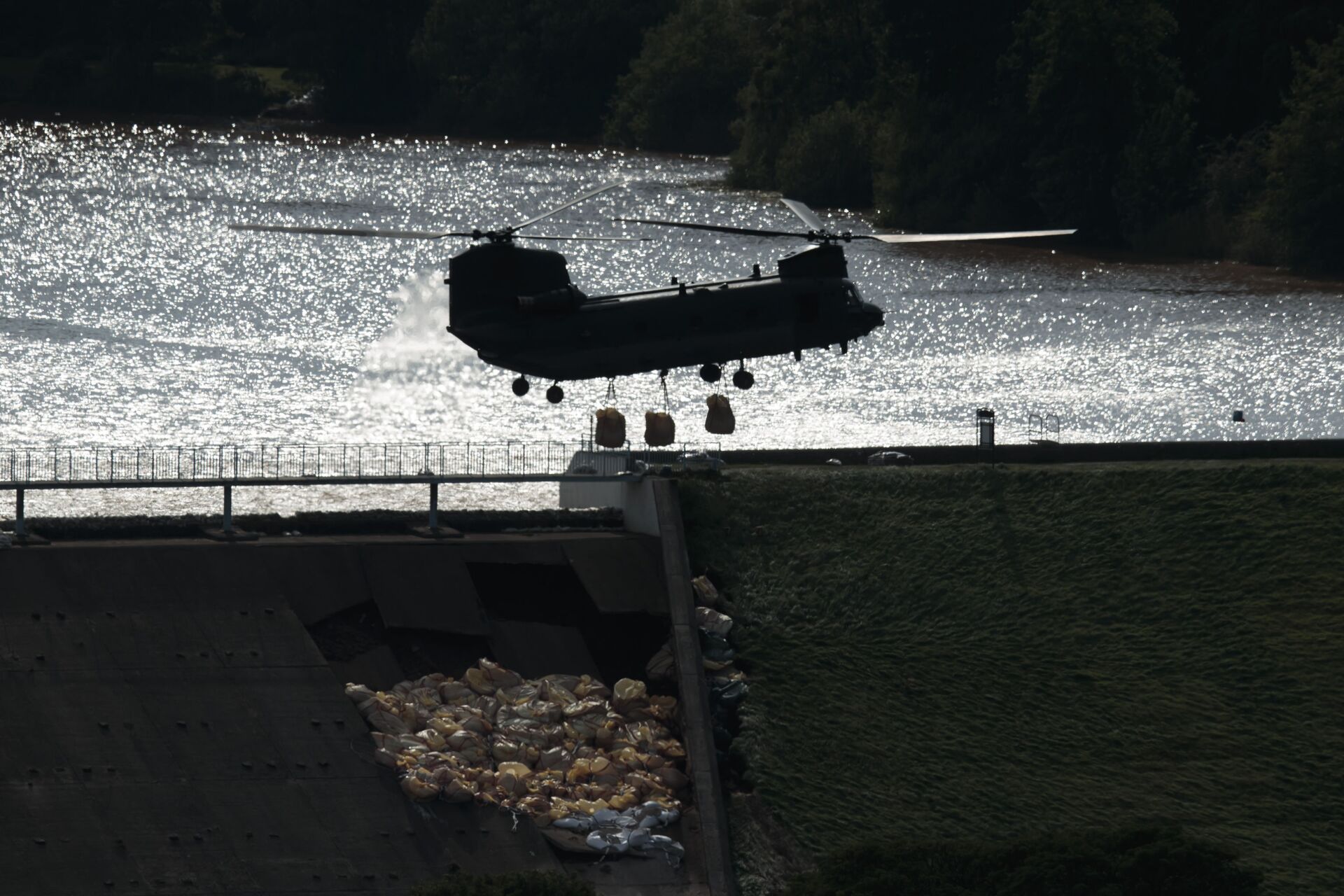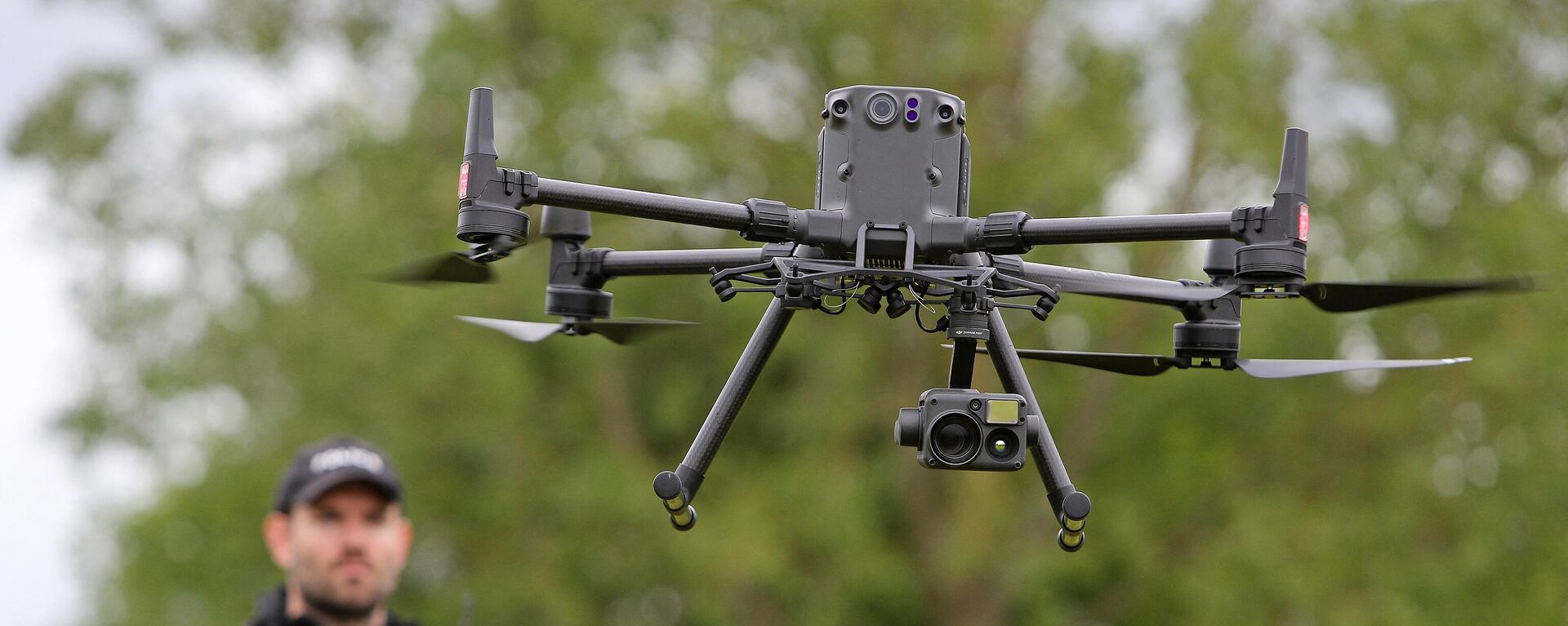https://sputnikglobe.com/20220806/the-biggest-f-up-in-the-raf-uks-training-of-fast-jet-pilots-in-crisis-leaked-docs-claim-1098676020.html
‘The Biggest F*** Up in the RAF': UK's Training of Fast Jet Pilots in Crisis, Leaked Docs Claim
‘The Biggest F*** Up in the RAF': UK's Training of Fast Jet Pilots in Crisis, Leaked Docs Claim
Sputnik International
From a desperate need for more flight instructors because of a ‘brain drain,’ to an influx of foreign students filling up crammed training courses, the present... 06.08.2022, Sputnik International
2022-08-06T11:14+0000
2022-08-06T11:14+0000
2023-05-28T15:20+0000
raf (uk)
pilots
chinook
typhoon aircraft
united kingdom (uk)
https://cdn1.img.sputnikglobe.com/img/107912/35/1079123587_0:41:1140:682_1920x0_80_0_0_ff0d42a5281add9f95d0c1bbcfbd7eca.jpg
Royal Air Force (RAF) recruits are increasingly spending months waiting for training slots to open, Sky News has reported.The RAF's fast jet pilot training backlog has turned into a full-blown crisis because of a whole series of “emerging” problems, according to the news outlet which cited leaked documents.Delays in training pilots could effect the availability of crews to operate Typhoon and F35 squadrons, defense sources have warned. The problem is reportedly also affecting pilots training to fly military transport planes and helicopters, as well as Royal Navy and Army aviators.Although there has been no suggestion of any forced redundancies, the severity of the backlog has prompted the RAF to consider asking up to 30 of its recruits to quit voluntarily, according to an internal memo from May and slides from a meeting of top RAF officers in July, cited by Sky News. One note warned of a "reputational risk" if such a step were taken.‘Holdies’Some 347 trainees, nicknamed “holdies”, are now waiting for a slot on a training course or a "refresher" course, one memo revealed. This represents more than half the 596-strong personnel in the total UK flying training system. Furthermore, some 80 personnel will have to wait three-and-a-half years to receive multi-engine training – a requirement for operating transport aircraft such as the A400m and the C-17. The same applies to crews of Rivet Joint reconnaissance aircraft and the Poseidon multi-role maritime patrol aircraft. Recruits would have to wait between two and three years to learn how to fly a Chinook helicopter.Among some of the problems singled out was the Rolls-Royce engine on the Hawk jet, used by fast jet recruits for training. The leaked memos suggested it would "reduce pipeline capacity over the next three years" and increase waiting times for some trainees by about 12 months.Another concern was the "damaging drain" of qualified instructor pilots quitting the RAF for better-paid jobs in industry."The draw is so great from such a small pool we are approaching a critical mass point," one slide seen by Sky News stated. Already limited training space is reportedly being taken up by a commitment from the UK to train pilots from Qatar and Saudi Arabia as part of a deal to sell the country's Typhoon jets. This has drawn out the waiting time for RAF pilots to complete the final stage of their training within the Operational Conversion Unit, according to a defense source. With just 43 slots available, only 11 trainee UK pilots are scheduled to go through the conversion stage of fast jet training to learn how to fly an F35 or a Typhoon this year, warned the report.‘Biggest F*** Up in the RAF'Weighing in on the situation, an unnamed former senior air force officer described the training situation as "a scandal and crisis", adding that it was not new and there has been a chronic problem for almost 30 years."At the moment, it's the biggest f*** up in the RAF," a serving officer was quoted as saying, adding:However, one serving RAF source denied there was a crisis, clarifying that this year’s difficulties were linked to the RAF plans to retire a number of aircraft as part of a modernization push.According to sources, Russia's special military operation in Ukraine has also added fuel to the fire. According to them, the RAF has been under pressure to provide more fast jets and crews to the airspace of NATO allies.As an example, they cited an occasion when instructors at the Operational Conversion Unit at RAF Coningsby had to reschedule their training courses to fly the quickly scrambled Quick Reaction Alert jets.To wrestle with the emerging training challenges, sources said that a senior group of RAF officers met three to four times a year.The cited training glitches have resulted in changing demographics within the service. Thus, the average age of a newly qualified pilot across the RAF has risen to 29 from early to mid-20s, which could have "significant implications for future professional development, reach and retention", one document warned.Some of today’s problems can be traced back to the end of the Cold War, defense sources added. They deplored the way successive UK governments sought to cut defense spending, repeatedly shrinking the size of the RAF, Army and Royal Navy, with frontline squadrons dropping to seven from an original of around 30. Furthermore, the report said that plans had been drawn up to privatize much of the military's flying training.In response to the report, an RAF spokesman was cited as saying that although there are “challenges with the training pipeline”, the service was “working across defense, with industry and our international partners to improve the training experience and results for our personnel, including recruiting more instructors and actively managing timeframes for training.”
https://sputnikglobe.com/20220704/404-squadron-analysts-unsurprised-at-raf-drone-units-lack-of-staff-and-uavs--1096944342.html
united kingdom (uk)
Sputnik International
feedback@sputniknews.com
+74956456601
MIA „Rossiya Segodnya“
2022
News
en_EN
Sputnik International
feedback@sputniknews.com
+74956456601
MIA „Rossiya Segodnya“
Sputnik International
feedback@sputniknews.com
+74956456601
MIA „Rossiya Segodnya“
raf (uk), pilots, chinook, typhoon aircraft, united kingdom (uk)
raf (uk), pilots, chinook, typhoon aircraft, united kingdom (uk)
‘The Biggest F*** Up in the RAF': UK's Training of Fast Jet Pilots in Crisis, Leaked Docs Claim
11:14 GMT 06.08.2022 (Updated: 15:20 GMT 28.05.2023) From a desperate need for more flight instructors because of a ‘brain drain,’ to an influx of foreign students filling up crammed training courses, the present situation in the Royal Air Force (RAF) jet pilots’ training system has been branded "a scandal".
Royal Air Force (RAF) recruits are increasingly spending months waiting for training slots to open, Sky News has reported.
The RAF's fast jet pilot training backlog has turned into a full-blown crisis because of a whole series of “emerging” problems, according to the news outlet which cited leaked documents.
Delays in training pilots could effect the availability of crews to operate Typhoon and F35 squadrons, defense sources have warned. The problem is reportedly also affecting pilots training to fly military transport planes and helicopters, as well as Royal Navy and Army aviators.
Although there has been no suggestion of any forced redundancies, the severity of the backlog has prompted the RAF to consider asking up to 30 of its recruits to quit voluntarily, according to an internal memo from May and slides from a meeting of top RAF officers in July, cited by Sky News. One note warned of a "reputational risk" if such a step were taken.
Some 347 trainees, nicknamed “holdies”, are now waiting for a slot on a training course or a "refresher" course, one memo revealed. This represents more than half the 596-strong personnel in the total UK flying training system. Furthermore, some 80 personnel will have to wait three-and-a-half years to receive multi-engine training – a requirement for operating transport aircraft such as the A400m and the C-17. The same applies to crews of Rivet Joint reconnaissance aircraft and the Poseidon multi-role maritime patrol aircraft. Recruits would have to wait between two and three years to learn how to fly a Chinook helicopter.
Among some of the problems singled out was the Rolls-Royce engine on the Hawk jet, used by fast jet recruits for training. The leaked memos suggested it would "reduce pipeline capacity over the next three years" and increase waiting times for some trainees by about 12 months.
Another concern was the "damaging drain" of qualified instructor pilots quitting the RAF for better-paid jobs in industry.
"The draw is so great from such a small pool we are approaching a critical mass point," one slide seen by Sky News stated.
Already limited training space is reportedly being taken up by a commitment from the UK to train pilots from Qatar and Saudi Arabia as part of a deal to sell the country's
Typhoon jets. This has drawn out the waiting time for RAF pilots to complete the final stage of their training within the Operational Conversion Unit, according to a defense source. With just 43 slots available, only 11 trainee UK pilots are scheduled to go through the conversion stage of fast jet training to learn how to fly an F35 or a Typhoon this year, warned the report.
‘Biggest F*** Up in the RAF'
Weighing in on the situation, an unnamed former senior air force officer described the training situation as "a scandal and crisis", adding that it was not new and there has been a chronic problem for almost 30 years.
"At the moment, it's the biggest f*** up in the RAF," a serving officer was quoted as saying, adding:
"To have a selection process that is second only to astronaut selection, so you're getting the cream of the cream, and then make them complete their flying training over six to eight years, when it should only take two to three years, is absolutely mad, especially when it is taxpayers' money."
However, one serving RAF source denied there was a crisis, clarifying that this year’s difficulties were linked to the RAF plans to retire a number of aircraft as part of a modernization push.
According to sources, Russia's
special military operation in Ukraine has also added fuel to the fire. According to them, the RAF has been under pressure to provide more fast jets and crews to the airspace of NATO allies.
As an example, they cited an occasion when instructors at the Operational Conversion Unit at RAF Coningsby had to reschedule their training courses to fly the quickly scrambled Quick Reaction Alert jets.
To wrestle with the emerging training challenges, sources said that a senior group of RAF officers met three to four times a year.
The cited training glitches have resulted in changing demographics within the service. Thus, the average age of a newly qualified pilot across the RAF has risen to 29 from early to mid-20s, which could have "significant implications for future professional development, reach and retention", one document warned.
Some of today’s problems can be traced back to the end of the Cold War, defense sources added. They deplored the way successive UK governments sought to cut defense spending, repeatedly shrinking the size of the RAF, Army and Royal Navy, with frontline squadrons dropping to seven from an original of around 30. Furthermore, the report said that plans had been drawn up to privatize much of the military's flying training.
"The system has been pared back to work only if everything turns out perfectly," a former RAF officer said.
In response to the report, an RAF spokesman was cited as saying that although there are “challenges with the training pipeline”, the service was “working across defense, with industry and our international partners to improve the training experience and results for our personnel, including recruiting more instructors and actively managing timeframes for training.”
“We continue to have sufficient aircrew to meet our operational commitments," the RAF spokesman insisted.




